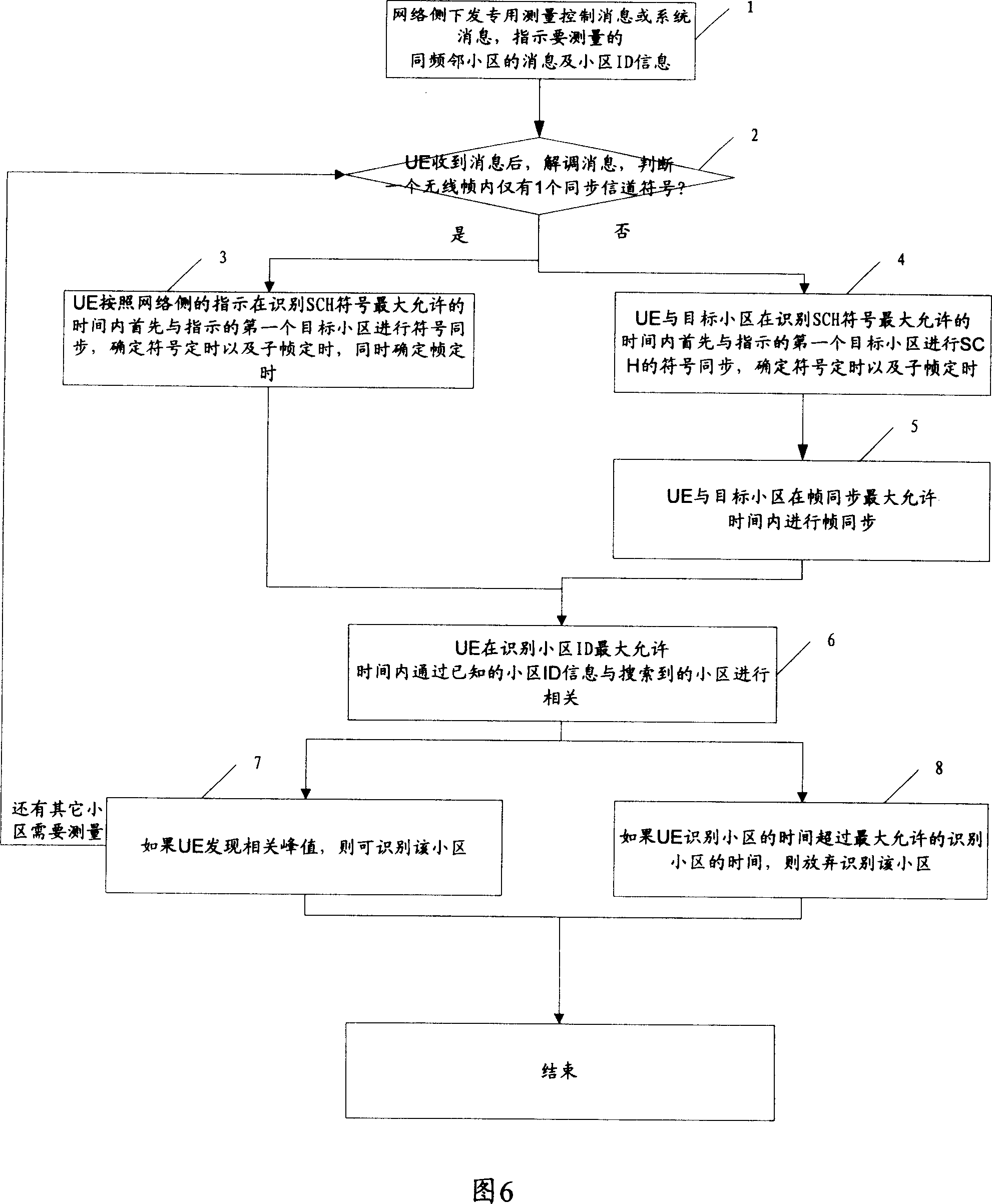A method and device for control cell recognition in long evolved system
A long-term evolution system and cell identification technology, which is applied in the field of communication to achieve the effect of control
- Summary
- Abstract
- Description
- Claims
- Application Information
AI Technical Summary
Problems solved by technology
Method used
Image
Examples
Embodiment 1
[0062] Embodiment 1 is an operation process for identifying a cell that is not in the cell list, as shown in Figure 1, including the following steps:
[0063] Step 1: The network side sends a measurement control message, or other messages containing the content of "instructing the UE to measure co-frequency adjacent cells that are not in the cell list";
[0064] Step 2: After receiving the message, the UE demodulates the message; if the SCH (Synchronization Channel) channel is designed in the time domain to have only one SCH symbol (Synchronization Channel Symbol) in a wireless frame, as shown in Figure 2, that is, 10ms There is only one SCH symbol in the UE, then the UE performs step 3, otherwise performs step 4;
[0065] Step 3: UE follows the instructions of the network side at time T SCH symbol sync time First, perform symbol synchronization with the indicated first target cell, determine symbol timing and subframe timing, and determine frame timing at the same time; and ...
Embodiment 2
[0100] Embodiment 2 is an operation process for identifying co-frequency adjacent cells indicated by the network, as shown in FIG. 6 , including the following steps:
[0101] Step 1: The network side sends a dedicated measurement control message or system message, and the sent message indicates the same-frequency cell to be measured and the ID information of the cell;
[0102] The cells to be measured issued by the network side include the following two situations: one is classified cells, including: cells of the same frequency layer, that is, at least adjacent cells have the same center frequency as the serving cell, adjacent cells of the same frequency or different frequency layers Community; the second is the community without classification.
[0103] The operations of steps 2, 3, and 4 are the same as in Embodiment 1, and will not be repeated here;
[0104] Step 5: UE and target cell at time T Radio frame sync time or T Radio frame sync time2 Frame synchronization withi...
Embodiment 3
[0115] Embodiment 3 is an operation process for identifying cells in the same-frequency neighbor cell list indicated by the network, as shown in FIG. 7 , including the following steps:
[0116] Wherein, step 1 to step 5 are the same as the operation in embodiment one;
[0117] Step 6: UE at time T Identify cell ID time Correlate with the searched cell through the cell ID information in the known neighbor cell list;
[0118] Step 7: If the UE finds a correlation peak, it indicates identifying the cell;
[0119] If there are unrecognized cells in the neighbor cell list, repeat the above operations to continue searching for unrecognized cells.
[0120] Step 8: If the two are not related, and the total recognition time exceeds the maximum allowed time T identify intra value range, stop identification, re-search the cell and identify it. If the time has not been greater than the maximum allowed time T identify intra value range, if there is still a cell in the neighbor cell li...
PUM
 Login to View More
Login to View More Abstract
Description
Claims
Application Information
 Login to View More
Login to View More - R&D
- Intellectual Property
- Life Sciences
- Materials
- Tech Scout
- Unparalleled Data Quality
- Higher Quality Content
- 60% Fewer Hallucinations
Browse by: Latest US Patents, China's latest patents, Technical Efficacy Thesaurus, Application Domain, Technology Topic, Popular Technical Reports.
© 2025 PatSnap. All rights reserved.Legal|Privacy policy|Modern Slavery Act Transparency Statement|Sitemap|About US| Contact US: help@patsnap.com



